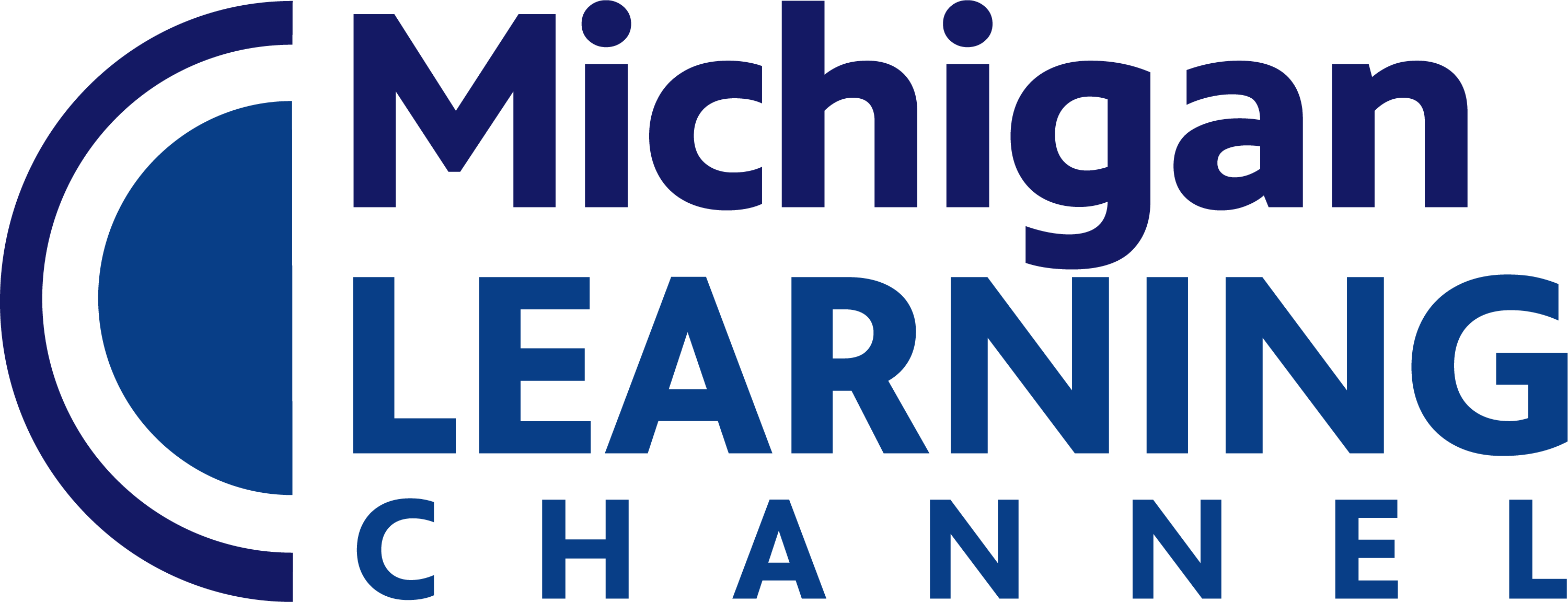Subjects
Shows
Evaluate and refine computational artifacts to make them more usable and accessible.
Design and develop computational artifacts working in team roles using collaborative tools.
Document design decisions using text, graphics, presentations, and/or demonstrations in the development of complex programs.
Evaluate the ways computing impacts personal, ethical, social, economic, and cultural practices.
Test and refine computational artifacts to reduce bias and equity deficits.
Demonstrate ways a given algorithm applies to problems across disciplines.
Use tools and methods for collaboration on a project to increase connectivity of people in different cultures and career fields.
Explain the beneficial and harmful effects that intellectual property laws can have on innovation.
Explain the privacy concerns related to the collection and generation of data through automated processes that may not be evident [...]
Evaluate the social and economic implications of privacy in the context of safety, law, or ethics.
Explain how abstractions hide the underlying implementation details of computing systems embedded in everyday objects.
Compare levels of abstraction and interactions between application software, system software, and hardware layers.
Develop guidelines that convey systematic troubleshooting strategies that others can use to identify and fix errors.
Evaluate the scalability and reliability of networks, by describing the relationship between routers, switches, servers, topology, and addressing.
Give examples to illustrate how sensitive data can be affected by malware and other attacks.
Recommend security measures to address various scenarios based on factors such as efficiency, feasibility, and ethical impacts.
Compare various security measures, considering tradeoffs between the usability and security of a computing system.
Explain tradeoffs when selecting and implementing cybersecurity recommendations.
Translate between different bit representations of real-world phenomena, such as characters, numbers, and images.
Evaluate the tradeoffs in how data elements are organized and where data is stored.
Create interactive data visualizations using software tools to help others better understand real-world phenomena.
Create computational models that represent the relationships among different elements of data collected from a phenomenon or process.
Create prototypes that use algorithms to solve computational problems by leveraging prior student knowledge and personal interests.
Use lists to simplify solutions, generalizing computational problems instead of repeatedly using simple variables.
Justify the selection of specific control structures when tradeoffs involve implementation, readability, and program performance, and explain the benefits and [...]
Design and iteratively develop computational artifacts for practical intent, personal expression, or to address a societal issue by using events [...]
Decompose problems into smaller components through systematic analysis, using constructs such as procedures, modules, and/or objects.
Create artifacts by using procedures within a program, combinations of data and procedures, or independent but interrelated programs.
Systematically design and develop programs for broad audiences by incorporating feedback from users.
Know and use a deliberate design process for generating ideas, testing theories, creating innovative artifacts, or solving authentic problems.
Select and use digital tools to plan and manage a design process that considers design constraints and calculated risks.
Develop, test, and refine prototypes as part of a cyclical design process.
Exhibit a tolerance for ambiguity, perseverance, and the capacity to work with open-ended problems.
Students develop and employ strategies for understanding and solving problems in ways that leverage the power of technological methods to [...]
Formulate problem definitions suited for technology-assisted methods such as data analysis, abstract models and algorithmic thinking in exploring and finding [...]
Collect data or identify relevant data sets, use digital tools to analyze them, and represent data in various ways to [...]
Break problems into component parts, extract key information, and develop descriptive models to understand complex systems or facilitate problem-solving.
Understand how automation works and use algorithmic thinking to develop a sequence of steps to create and test automated solutions.
Students communicate clearly and express themselves creatively for a variety of purposes using the platforms, tools, styles, formats and digital [...]
Choose the appropriate platforms and tools for meeting the desired objectives of their creation or communication.
Create original works or responsibly repurpose or remix digital resources into new creations.
Communicate complex ideas clearly and effectively by creating or using a variety of digital objects such as visualizations, models or [...]
Publish or present content that customizes the message and medium for their intended audiences.
Students use digital tools to broaden their perspectives and enrich their learning by collaborating with others and working effectively in [...]
Use digital tools to connect with learners from a variety of backgrounds and cultures, engaging with them in ways that [...]
Use collaborative technologies to work with others, including peers, experts, or community members, to examine issues and problems from multiple [...]
Contribute constructively to project teams, assuming various roles and responsibilities to work effectively toward a common goal.
Explore local and global issues and use collaborative technologies to work with others to investigate solutions.
Students leverage technology to take an active role in choosing, achieving, and demonstrating competency in their learning goals, informed by [...]
Articulate and set personal learning goals, develop strategies leveraging technology to achieve them, and reflect on the learning process itself [...]
Subjects
Shows
Evaluate and refine computational artifacts to make them more usable and accessible.
Design and develop computational artifacts working in team roles using collaborative tools.
Document design decisions using text, graphics, presentations, and/or demonstrations in the development of complex programs.
Evaluate the ways computing impacts personal, ethical, social, economic, and cultural practices.
Test and refine computational artifacts to reduce bias and equity deficits.
Demonstrate ways a given algorithm applies to problems across disciplines.
Use tools and methods for collaboration on a project to increase connectivity of people in different cultures and career fields.
Explain the beneficial and harmful effects that intellectual property laws can have on innovation.
Explain the privacy concerns related to the collection and generation of data through automated processes that may not be evident [...]
Evaluate the social and economic implications of privacy in the context of safety, law, or ethics.
Explain how abstractions hide the underlying implementation details of computing systems embedded in everyday objects.
Compare levels of abstraction and interactions between application software, system software, and hardware layers.
Develop guidelines that convey systematic troubleshooting strategies that others can use to identify and fix errors.
Evaluate the scalability and reliability of networks, by describing the relationship between routers, switches, servers, topology, and addressing.
Give examples to illustrate how sensitive data can be affected by malware and other attacks.
Recommend security measures to address various scenarios based on factors such as efficiency, feasibility, and ethical impacts.
Compare various security measures, considering tradeoffs between the usability and security of a computing system.
Explain tradeoffs when selecting and implementing cybersecurity recommendations.
Translate between different bit representations of real-world phenomena, such as characters, numbers, and images.
Evaluate the tradeoffs in how data elements are organized and where data is stored.
Create interactive data visualizations using software tools to help others better understand real-world phenomena.
Create computational models that represent the relationships among different elements of data collected from a phenomenon or process.
Create prototypes that use algorithms to solve computational problems by leveraging prior student knowledge and personal interests.
Use lists to simplify solutions, generalizing computational problems instead of repeatedly using simple variables.
Justify the selection of specific control structures when tradeoffs involve implementation, readability, and program performance, and explain the benefits and [...]
Design and iteratively develop computational artifacts for practical intent, personal expression, or to address a societal issue by using events [...]
Decompose problems into smaller components through systematic analysis, using constructs such as procedures, modules, and/or objects.
Create artifacts by using procedures within a program, combinations of data and procedures, or independent but interrelated programs.
Systematically design and develop programs for broad audiences by incorporating feedback from users.
Know and use a deliberate design process for generating ideas, testing theories, creating innovative artifacts, or solving authentic problems.
Select and use digital tools to plan and manage a design process that considers design constraints and calculated risks.
Develop, test, and refine prototypes as part of a cyclical design process.
Exhibit a tolerance for ambiguity, perseverance, and the capacity to work with open-ended problems.
Students develop and employ strategies for understanding and solving problems in ways that leverage the power of technological methods to [...]
Formulate problem definitions suited for technology-assisted methods such as data analysis, abstract models and algorithmic thinking in exploring and finding [...]
Collect data or identify relevant data sets, use digital tools to analyze them, and represent data in various ways to [...]
Break problems into component parts, extract key information, and develop descriptive models to understand complex systems or facilitate problem-solving.
Understand how automation works and use algorithmic thinking to develop a sequence of steps to create and test automated solutions.
Students communicate clearly and express themselves creatively for a variety of purposes using the platforms, tools, styles, formats and digital [...]
Choose the appropriate platforms and tools for meeting the desired objectives of their creation or communication.
Create original works or responsibly repurpose or remix digital resources into new creations.
Communicate complex ideas clearly and effectively by creating or using a variety of digital objects such as visualizations, models or [...]
Publish or present content that customizes the message and medium for their intended audiences.
Students use digital tools to broaden their perspectives and enrich their learning by collaborating with others and working effectively in [...]
Use digital tools to connect with learners from a variety of backgrounds and cultures, engaging with them in ways that [...]
Use collaborative technologies to work with others, including peers, experts, or community members, to examine issues and problems from multiple [...]
Contribute constructively to project teams, assuming various roles and responsibilities to work effectively toward a common goal.
Explore local and global issues and use collaborative technologies to work with others to investigate solutions.
Students leverage technology to take an active role in choosing, achieving, and demonstrating competency in their learning goals, informed by [...]
Articulate and set personal learning goals, develop strategies leveraging technology to achieve them, and reflect on the learning process itself [...]


